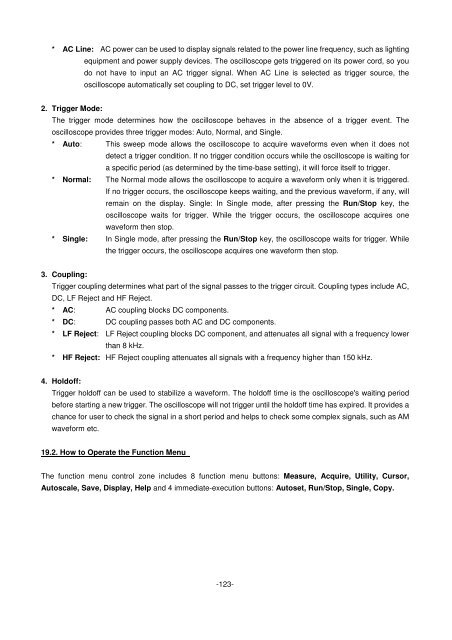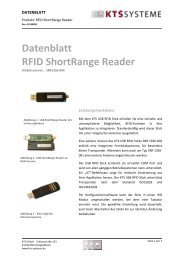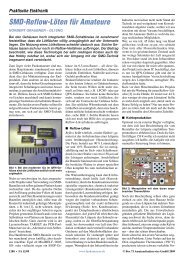Bedienungsanleitung / Operation manual 30 MHz Digital ...
Bedienungsanleitung / Operation manual 30 MHz Digital ...
Bedienungsanleitung / Operation manual 30 MHz Digital ...
Sie wollen auch ein ePaper? Erhöhen Sie die Reichweite Ihrer Titel.
YUMPU macht aus Druck-PDFs automatisch weboptimierte ePaper, die Google liebt.
* AC Line: AC power can be used to display signals related to the power line frequency, such as lighting<br />
equipment and power supply devices. The oscilloscope gets triggered on its power cord, so you<br />
do not have to input an AC trigger signal. When AC Line is selected as trigger source, the<br />
oscilloscope automatically set coupling to DC, set trigger level to 0V.<br />
2. Trigger Mode:<br />
The trigger mode determines how the oscilloscope behaves in the absence of a trigger event. The<br />
oscilloscope provides three trigger modes: Auto, Normal, and Single.<br />
* Auto: This sweep mode allows the oscilloscope to acquire waveforms even when it does not<br />
detect a trigger condition. If no trigger condition occurs while the oscilloscope is waiting for<br />
a specific period (as determined by the time-base setting), it will force itself to trigger.<br />
* Normal: The Normal mode allows the oscilloscope to acquire a waveform only when it is triggered.<br />
If no trigger occurs, the oscilloscope keeps waiting, and the previous waveform, if any, will<br />
remain on the display. Single: In Single mode, after pressing the Run/Stop key, the<br />
oscilloscope waits for trigger. While the trigger occurs, the oscilloscope acquires one<br />
waveform then stop.<br />
* Single: In Single mode, after pressing the Run/Stop key, the oscilloscope waits for trigger. While<br />
the trigger occurs, the oscilloscope acquires one waveform then stop.<br />
3. Coupling:<br />
Trigger coupling determines what part of the signal passes to the trigger circuit. Coupling types include AC,<br />
DC, LF Reject and HF Reject.<br />
* AC: AC coupling blocks DC components.<br />
* DC: DC coupling passes both AC and DC components.<br />
* LF Reject: LF Reject coupling blocks DC component, and attenuates all signal with a frequency lower<br />
than 8 kHz.<br />
* HF Reject: HF Reject coupling attenuates all signals with a frequency higher than 150 kHz.<br />
4. Holdoff:<br />
Trigger holdoff can be used to stabilize a waveform. The holdoff time is the oscilloscope's waiting period<br />
before starting a new trigger. The oscilloscope will not trigger until the holdoff time has expired. It provides a<br />
chance for user to check the signal in a short period and helps to check some complex signals, such as AM<br />
waveform etc.<br />
19.2. How to Operate the Function Menu<br />
The function menu control zone includes 8 function menu buttons: Measure, Acquire, Utility, Cursor,<br />
Autoscale, Save, Display, Help and 4 immediate-execution buttons: Autoset, Run/Stop, Single, Copy.<br />
-123-





